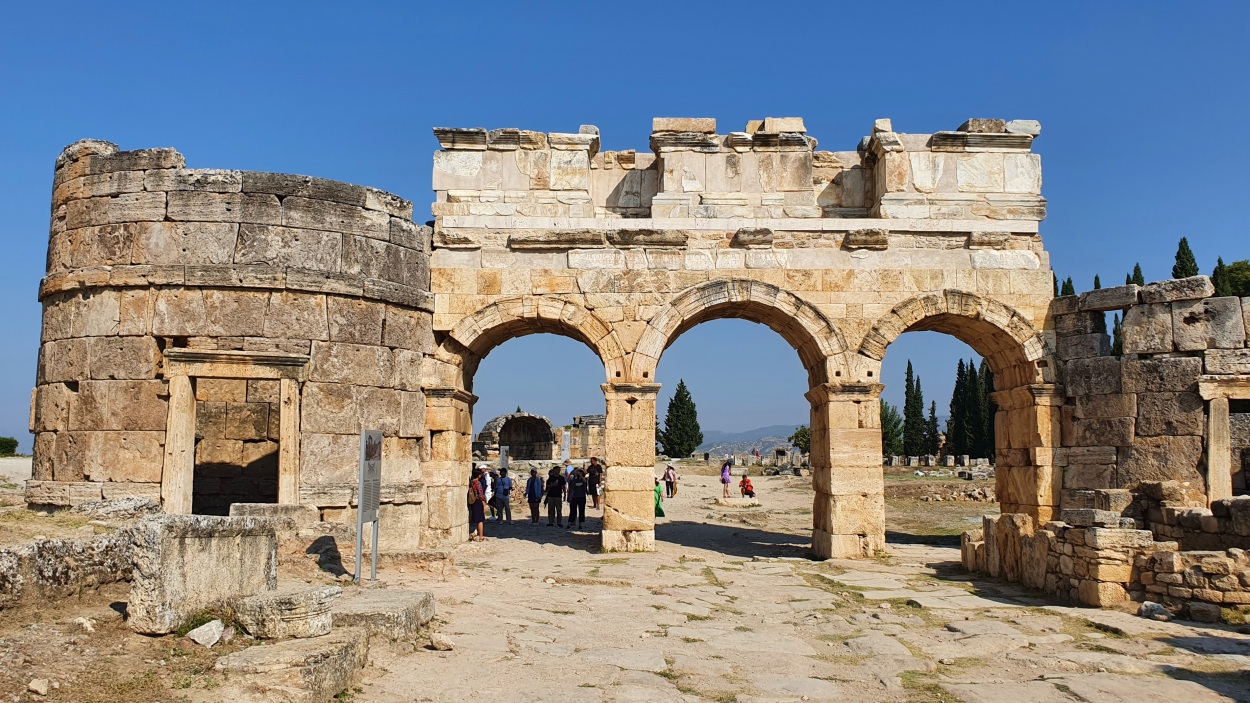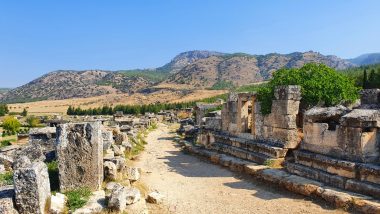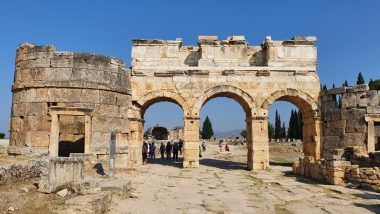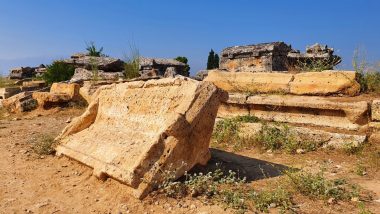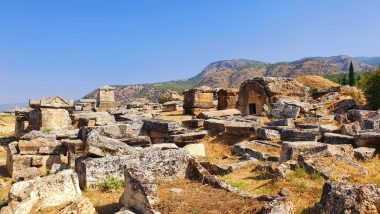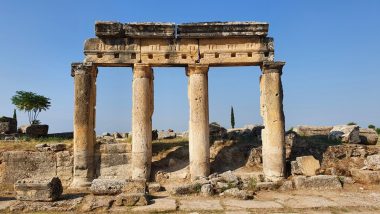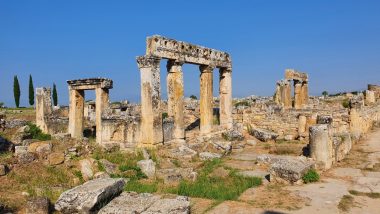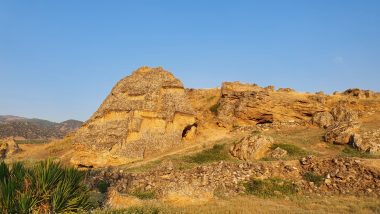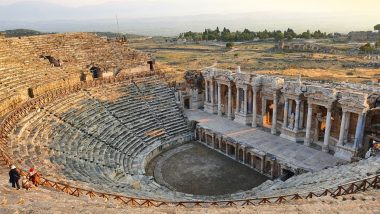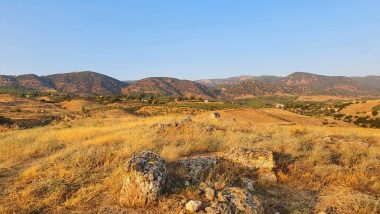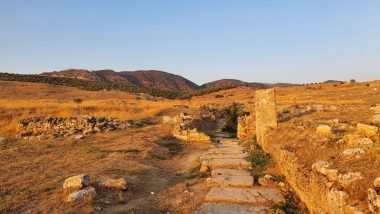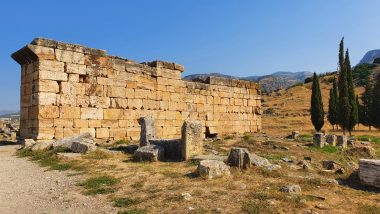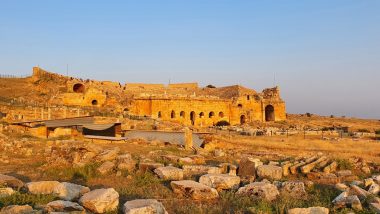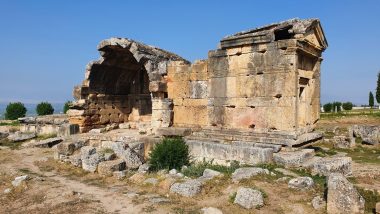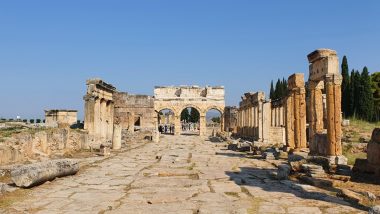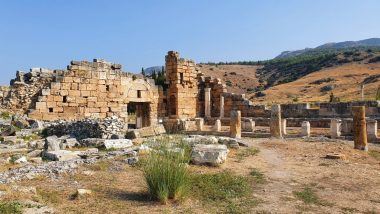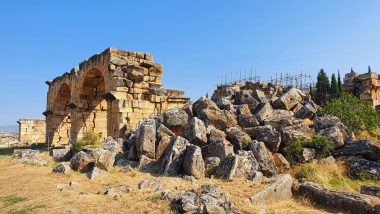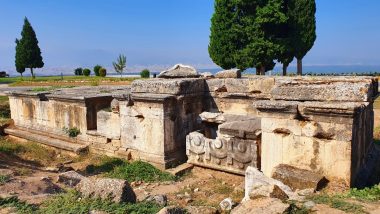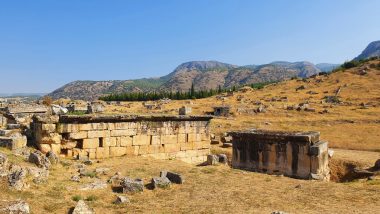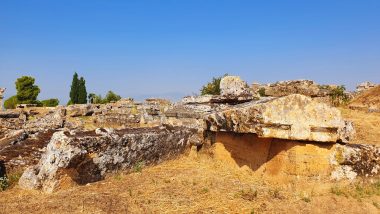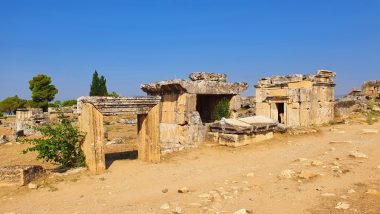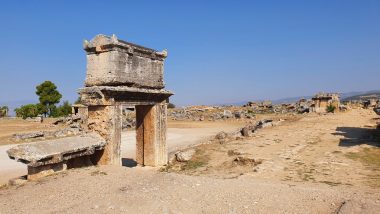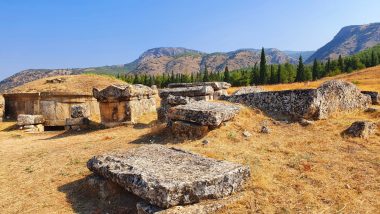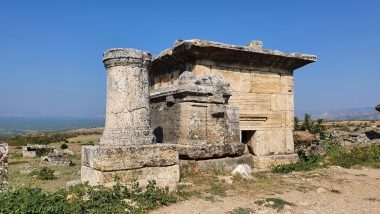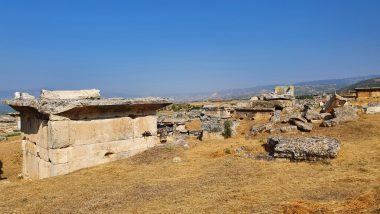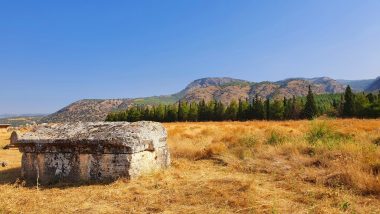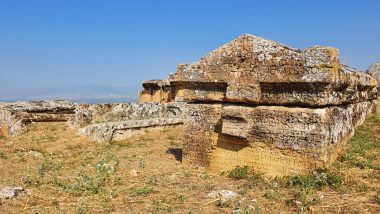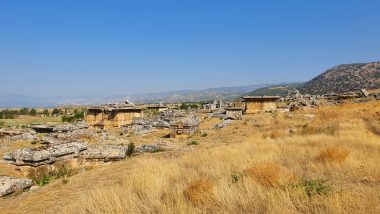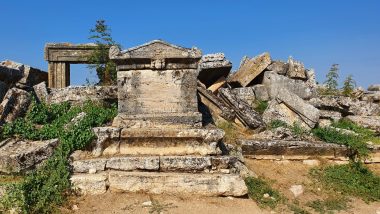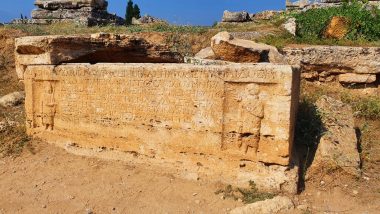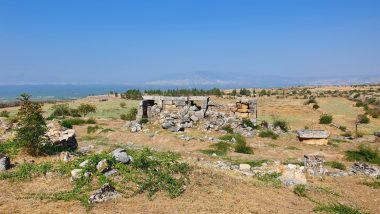It was an ancient Phrygian city in southwestern Turkey, about 10 kilometers north of the ruins of Laodicea (🎫 200 TRY). Situated on the Coruh River, a tributary of the Buyuk Menderes River, it was probably established by Eumenes II of Pergamum in 190 BC. It became a sacred city, its chief religious festival being the Letoia, named after the goddess Leto, a local variant of the Great Mother of the Gods, who was honored with orgiastic rites. There was also the worship of Apollo Lairbenos. Hierapolis was rebuilt during the reign of the Roman emperor Tiberius in approximately AD 14–37 and survived until 1334 when it was abandoned after an earthquake. Extensive ruins, excavated since the 19th century, include baths, a gymnasium, an agora, and a Byzantine church. If you would like to visit both sites, Pamukkale and Hierapolis, and you would like to avoid the entrance fee, simply follow the footpath from bus parking over a little hill.
Parking location – Pamukkale: 37.922442N 29.131465E (🚻, 🅿️ – 60 TRY)


